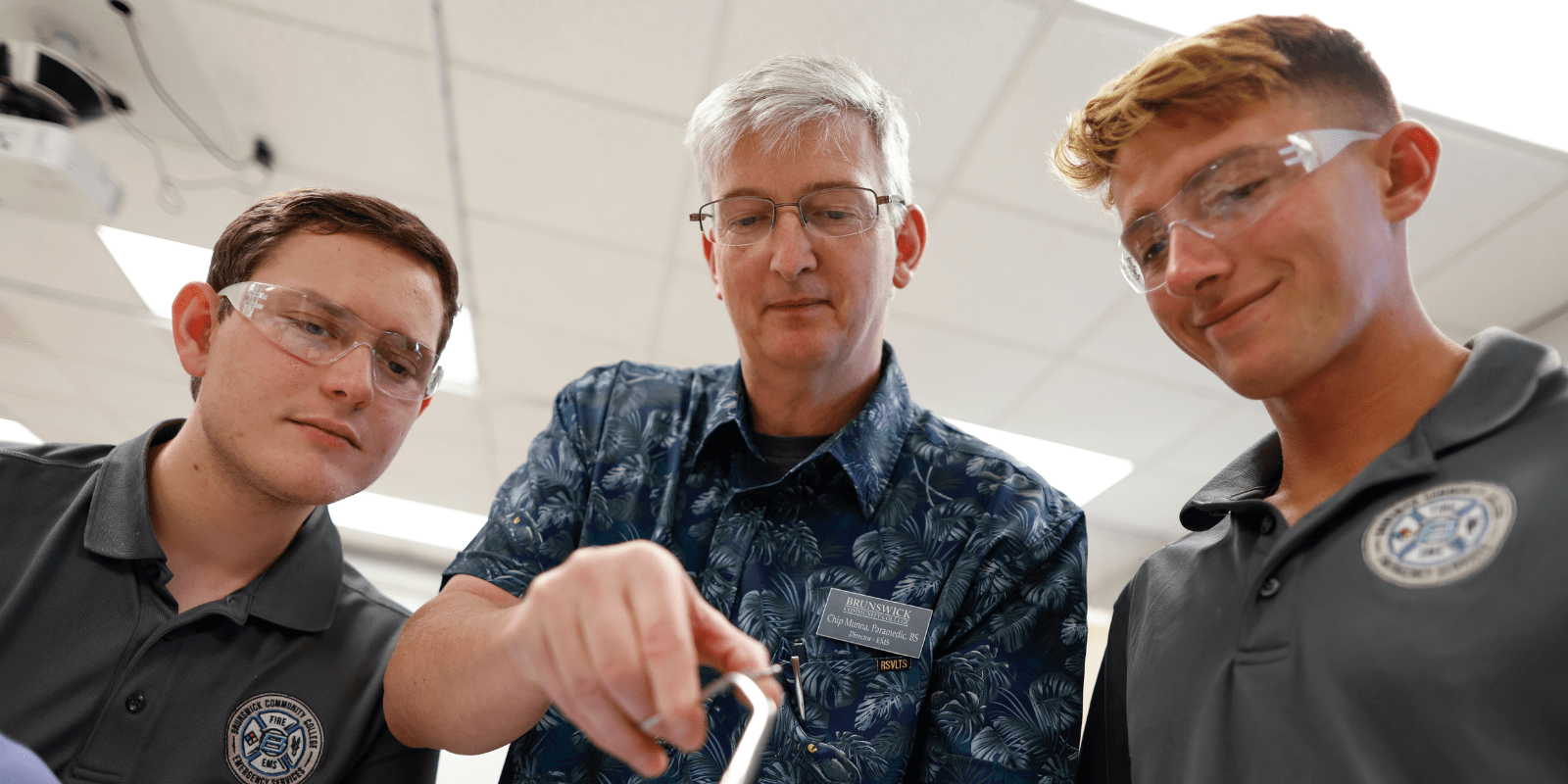Emergency Medical Science – Associate in Applied Science Degree (A45340)
Want to be a paramedic?
If you thrive on helping others, having a variety of workplace experiences, and think an ambulance is an ideal workplace, consider a career as a Paramedic. It’s challenging, fast-paced, and rewarding. It also offers an excellent wage and the opportunity to advance within the healthcare industry. Students will gain complex knowledge, competency, and experience while employing evidence-based practice under medical oversight.
Your first semester of training focuses on earning your Emergency Medical Technician (EMT) credentials before moving on to the final four semesters of the degree program. Through a mix of classroom and practical training, you will learn to access patients, treat wounds, splint traumatic injuries, provide intravenous (IV) therapy, administer medication, electrical therapy, and more. Students currently holding a valid EMT or Advanced EMT credential can get credit for certain EMS college courses.
Graduates of this program may be eligible to take state and/or national certification examinations. Employment opportunities include emergency medical services, fire departments, rescue agencies, hospital specialty areas, industry, educational, and government agencies.
Get started
If this sounds like you, we invite you to learn more about earning an Associate Degree in Applied Science and begin working as a Paramedic in as little as five semesters at BCC. Review the curriculum outline below, apply today or contact us to learn more. Note: If you’re already a Paramedic with current credentials but haven’t yet earned your degree, consider our Emergency Medical Science Degree Bridge Option. The EMS Bridge option can earn you up to 48 credit hours towards your EMS degree.
Brunswick Community College’s Emergency Medical Science program is approved by the North Carolina Office of Emergency Medical Services.
Minimum Expectations goal statement:
To prepare Paramedics who are competent in the cognitive (knowledge), psychomotor (skills), and affective (behavior) learning domains to enter the profession.
| Course | Title | Credits |
|---|---|---|
| Fall Semester # 1 | ||
| BIO 168 | Anatomy & Physiology I | 4 |
| ENG 111 | Writing and Inquiry | 3 |
| EMS 110 | EMT | 9 |
| Semester Total | 16 | |
| Spring Semester #1 | ||
| BIO 169 | Anatomy & Physiology II | 4 |
| EMS 130 | Pharmacology | 4 |
| EMS 131 | Adv Airway Management | 2 |
| EMS 160 | Cardiology I | 3 |
| EMS 121 | AEMT Clinical Practicum | 2 |
| or EMS 122 | AEMT Clinical Practicum I | 1 |
| Semester Total | 14/15 | |
| Summer Semester #1 | ||
| EMS 250 | Medical Emergencies | 4 |
| EMS 220 | Cardiology II | 3 |
| EMS 221 | EMS Clinical Practicum II | 2 |
| Semester Total | 9 | |
| Fall Semester # 2 | ||
| EMS 231 | EMS Clinical Practicum II | 3 |
| EMS 260 | Trauma Emergencies | 2 |
| EMS 270 | Life Span Emergencies | 4 |
| EMS 240 | Patients w/Special Challenges | 2 |
| Select One: | 3 | |
| ENG 112, ENG 114, COM 120 or COM 231 | ||
| Semester Total | 14 | |
| Humanities/Fine Arts Elective* | 3 | |
| HUM 115, PHI 215, or PHI 240 | ||
| PSY 150 | General Psychology | 3 |
| EMS 235 | EMS Management | 2 |
| EMS 241 | EMS Clinical Practicum IV | 4 |
| EMS 285 | EMS Capstone | 2 |
| Semester Total | 14 | |
| TOTAL PROGRAM CREDITS | 67/68 | |


